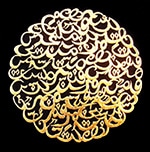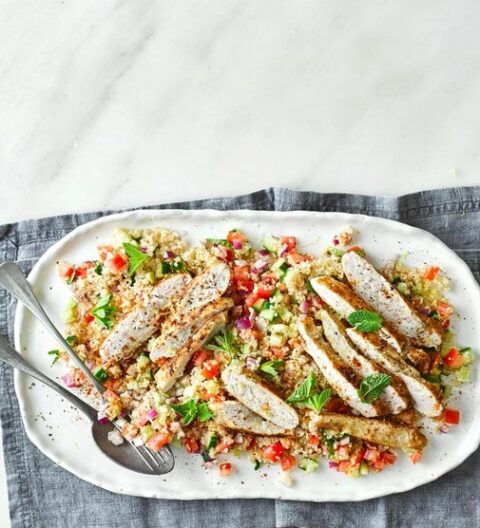
A simple recipe using best olive oil in a diet for weightloss and a diet for diabetes.
Updated June 8th 2023
How Mediterranean Diet Recipes Including Extra Virgin Olive Oil (EVOO) Deliver Amazing Health Benefits.
The Mediterranean diet has long been praised for its health benefits, with extra virgin olive oil (EVOO) at its core, now recognised as the best olive oil for its abundance of polyphenols. These compounds are known for their powerful antioxidant properties that protect the body against free radicals, which can contribute to disease and aging. Research has shown that the consumption of extra virgin olive oil EVOO as a part of a Mediterranean diet can reduce the risk of heart disease, stroke, and type 2 diabetes.
Additionally, it has been linked to improved brain function, decreased inflammation, and a lower risk of certain cancers. If you’re looking to improve your health and incorporate a healthy fat into your diet, extra virgin olive oil EVOO is a delicious and nutritious choice.
Extra Virgin Olive Oil (EVOO) : The Best Olive Oil There Is.
Extra virgin olive oil (EVOO) is renowned for being the best olive oil on the market. What makes it so special is the way it’s made by pressing freshly harvested olives without the use of chemicals or solvents. Unlike other oils, extra virgin olive oil (EVOO) is rich in polyphenols – natural compounds that offer many health benefits, such as reducing inflammation, improving heart health, and possibly even preventing cancer. The unique blend of flavors in extra virgin olive oil (EVOO) also makes it a popular choice for culinary enthusiasts around the world. Whether you’re looking to improve your overall health or simply looking for a delicious ingredient to add to your recipes, extra virgin olive oil (EVOO) is a fantastic choice.
Ingredients
- Linguine 500g
- Morocco Gold extra virgin olive oil 2 tbsp
- Garlic 1 bulb, cloves peeled and thinly sliced
- Kale 1 large head, shredded, tough stalks discarded
- Pitted black (such as Kalamata) or mixed olives 150g, roughly chopped
- Aleppo pepper 2-3 tbsp
- Lemons 2, juice of 1 and zest of 2
- Feta 400g
Instructions
- Cook the linguine in a large pan of boiling salted water following pack instructions.
- Meanwhile, heat the olive oil in a large frying pan over a medium heat and gently cook the garlic until translucent. Add the shredded kale and fry for 5 minutes or until starting to soften.
- Using tongs, lift the pasta from the water and add it to the frying pan with a few spoon-fulls of the cooking water. Stir well, then add the olives and a little seasoning. Add the pul biter and lemon juice and zest and combine before crumbling in ¾ of the feta and tossing the pasta to evenly distribute the ingredients. Add a few more tbsp of pasta cooking water if it seems dry. Serve with a sprinkling of the remaining feta.
What’s The Difference Between Extra Virgin Olive Oil (EVOO) and Olive Oil
For the health-conscious foodie, choosing the best olive oil is of utmost importance. While both extra virgin olive oil (EVOO) and regular olive oil appear identical on the shelves, their differences are more than skin deep. Extra virgin olive oil (EVOO) is made from the purest form of cold-pressed olives, with no chemical processing or heating used in its production.
This results in a low acidity level and high levels of polyphenols, which offer an array of olive oil health benefits such as reducing inflammation. Regular olive oil, on the other hand, is made from a blend of cold-pressed and processed oils, resulting in a less pungent flavor and higher smoke point. So when choosing between extra virgin olive oil (EVOO) and olive oil, consider not only flavor but also health benefits to make the best choice for your culinary en-deavors.
Can You Use Olive Oil Instead of Vegetable Oil
If you are curious about using olive oil instead of vegetable oil in cooking, you’re in the right place. Extra virgin olive oil is the best olive oil to choose because it is extracted naturally and doesn’t contain any chemicals or solvents. The reason why the substitution between olive oil and vegetable oil works is due to the similar fatty acid composition. However, what distin-guishes olive oil is the presence of polyphenols, which provide health benefits such as de-creasing inflammation and reducing the risk of heart disease. While using olive oil in cooking can be a healthier option, it doesn’t quite have the same neutral flavor profile as vegetable oil. So, keep in mind that using olive oil may change the flavor of your dish.
Olive Oil Smoke Point
Olive oil has gained a reputation as one of the healthiest oils available on the market, with ex-tra virgin olive oil (EVOO) being widely regarded as the best olive oil. However, there are a few things to keep in mind when using extra virgin olive oil (EVOO) for cooking. The ‘smoke point’ of an oil is the temperature at which it starts to smoke and break down and produce potentially harmful free radicals. Contrary to some beliefs, however, high quality extra virgin olive oil such as Morocco Gold is a great choice for many cooking methods as its smoke point is somewhere around 374 – 405 °F (190–207°C). As explained by the Olive Wellness Institute, Extra Virgin Olive Oil contains high levels of natural antioxidants. These antioxidants protect the naturally stable oil when heated, making Extra Virgin Olive Oil a very health option to cook with.
What Are The Calories In Olive Oil
What Is In 1 Tablespoon Of Extra Virgin Olive Oil (EVOO)? One serving or 1 tablespoon of extra-virgin olive oil contains the following:
• 120 calories
• 10 grams of monounsaturated fat
• 2 grams of saturated fat
• 2 grams of polyunsaturated fat
• 1.9 milligrams of vitamin E (10 percent of Daily Value)
• 8.1 micrograms of vitamin K (10 percent of DV)
Not All Calories Are Created Equal
As part of maintaining a healthy diet many people want to know how many calories are in ol-ive oil. Research has shown that not all calories are necessarily equal. In a famous study at Middlesex Hospital in London in the 1950s, two British researchers, Pro-fessor Alan Kekwick and Dr. Gaston L.S. Pawan, tested a series of diets on overweight pa-tients. The patients on a high-carbohydrate diet consistently gained or sustained weight, even when given limited calories. Conversely, subjects on a high-fat diet lost considerably more weight than any of the other diets, even when provided with excess calories.
Is Olive Oil Good For You?
Whether you are looking for a diet for health heart, a diet for weight loss, or a diet for diabetes, incorporating extra virgin olive oil into your healthy diet plan is a simple healthy diet choice that can have a profound impact on your health and wellbeing.
About Linguine
Linguine is a type of pasta similar to fettuccine and trenette but elliptical in section rather than flat. It is about 4 millimetres in width, which is wider than spaghetti but not as wide as fettuccine. The name linguine means “little tongues” in Italian. These thinner flat pastas, like fettuccine or linguine, are best paired with simple cream sauces like Alfredo or delicate proteins like seafood.
About Kale
Kale is not a new vegetable although due to its health properties its popularity has skyrocketed in recent years. It has become available at not only farmer’s markets but is now available in local grocery stores. You can purchase it in fresh bunches or prerinsed and trimmed in bags.
Types Of Kale
Curly kale is the most common type. The bright green leaves look like ruffles. The flavour is pungent and peppery. Dinosaur kale has narrow green leaves that are wrinkly like dinosaur skin. The leaves are attached to a firm stem that should be removed. Redbor kale has ruffled leaves ranging in colour from a deep red to purple. Russian kale is harder to find, and it has flat fringed leaves that range in colour from green to red to purple. Its flavour is sweeter and more peppery.
Nutritional Benefits
Kale is a nutrition superstar due to the amounts of vitamins A, K, B6 and C, calcium, potassium, copper and manganese it contains. One cup of raw kale has just 33 calories and only 7 grams of carbohydrate. So, it’s a very diabetes-friendly/weight-friendly vegetable. Kale is a member of the cruciferous vegetable family along with cauliflower, Brussels sprouts, cabbage, broccoli, collard greens, kohlrabi, rutabaga, turnips and bok choy. These vegetables offer health benefits, including potentially reducing the risk of various types of cancer. The only people who may need to avoid or limit kale intake are those that form oxalate containing kidney stones or take the blood thinner Coumadin/warfarin. Be sure to check with your doctor or dietitian if you have questions.
Uses For Kale
Kale holds its texture well in cooking, and it can be steamed, stir fried, roasted, or eaten raw. You can turn it into smoothies, kale chips, wilt it into soup, mash it with potatoes or turn it into pesto. Always remove the middle rib as it tends to be overly tough and fibrous and imparts a more bitter taste when eaten. Remove the rib by hand or with kitchen shears.



